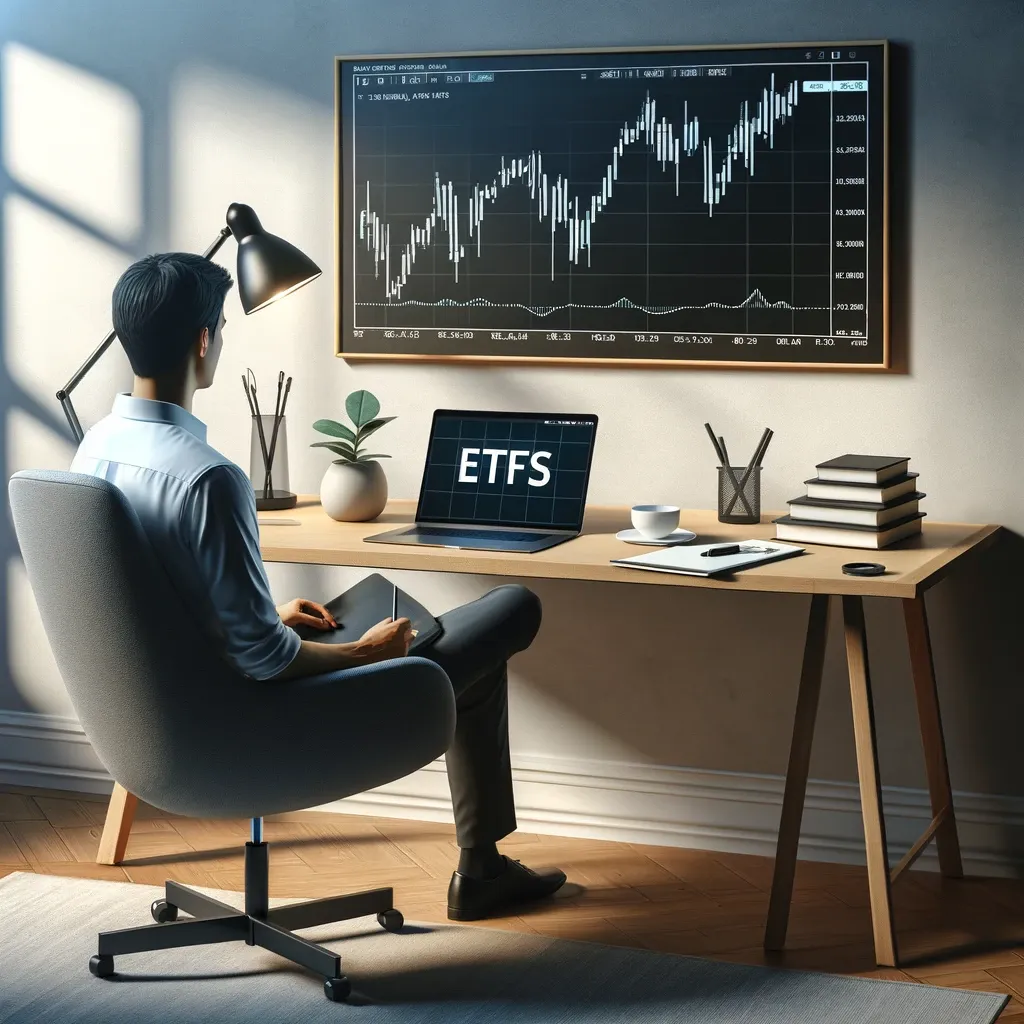Investing in Low-Cost ETFs: A Smart Strategy for Building Wealth
Let's talk about a game-changer in the world of investing - low-cost Exchange-Traded Funds, or ETFs for short. If you're looking to grow your wealth without spending a fortune or getting lost in complex financial jargon, this might just be your ticket.
So, what's the big deal about low-cost ETFs? Well, imagine being able to invest in a whole bunch of different stocks or bonds all at once, without having to break the bank or become a full-time stock analyst. That's essentially what ETFs offer.
These nifty investment vehicles are like baskets filled with a mix of stocks, bonds, or other assets. The best part? You can buy and sell them just like you would individual stocks. But here's where it gets really interesting - the 'low-cost' part.
You see, many ETFs come with super low fees. We're talking about expense ratios as low as 0.03% in some cases. That means for every $10,000 you invest, you're only paying $3 in fees per year. Compare that to some actively managed funds that might charge 1% or more, and you can see why investors are getting excited about ETFs.
But it's not just about saving money on fees (although that's a pretty sweet deal). Low-cost ETFs offer a bunch of other benefits that make them a smart choice for both newbie investors and seasoned pros.
Let's start with diversification. It's the investing equivalent of not putting all your eggs in one basket. When you buy an ETF, you're essentially buying a little piece of many different companies or assets. This spread can help protect your investment if one particular stock or sector takes a nosedive.
Take the iShares Core S&P 500 ETF, for example. By investing in this single ETF, you're getting exposure to 500 of the largest U.S. companies. That's a lot of diversification with just one purchase!
Another great thing about ETFs is how flexible they are. You can build a portfolio that's as simple or as complex as you want. Just starting out? You could go with a two-ETF portfolio - one for stocks and one for bonds. Something like 60% in a total world stock market ETF and 40% in a total bond market ETF could work well.
But if you're feeling a bit more adventurous and want to fine-tune your investments, you can mix and match different types of ETFs. You could add some international flavor with a developed markets ETF, sprinkle in some emerging markets for growth potential, or even add some sector-specific ETFs if you have a hunch about a particular industry.
Now, let's talk about transparency. With ETFs, you're not investing blindly. You can see exactly what stocks or bonds the ETF holds on any given day. This level of transparency is pretty rare in the investing world and can be really reassuring when you're deciding where to put your money.
And control? Oh yeah, you've got plenty of that too. ETFs trade throughout the day like stocks, so you can buy or sell whenever the market's open. Need to make a quick adjustment to your portfolio? No problem.
But here's where it gets really interesting - the strategies you can use with ETFs. One popular approach is dollar-cost averaging. It's a fancy term for a simple idea: invest a fixed amount regularly, regardless of what the market's doing. This way, you buy more shares when prices are low and fewer when they're high. Over time, this can help smooth out the bumps in the market.
For the more active investors out there, swing trading with ETFs can be an option. This involves holding positions for a few days or weeks to capture price movements. It's not for everyone, as it requires more time and skill, but it can be profitable if done right.
And if you're someone who wants their investments to align with their values, there are ETFs for that too. ESG (Environmental, Social, and Governance) ETFs invest in companies that meet certain ethical criteria. It's a way to put your money where your morals are.
Now, let's bring this down to earth with some real-world examples. Say you're just starting out in your career and want to dip your toes into investing. You could start by putting $500 a month into a low-cost ETF like the Vanguard Total Stock Market ETF (VTI). Over time, thanks to the magic of compound interest, this could grow into a pretty substantial nest egg.
Or maybe you're a bit further along in your investing journey and want to add some international exposure. The Schwab International Equity ETF (SCHF) could be a good option. It gives you access to large and mid-sized companies in developed countries outside the U.S.
Of course, like anything in investing, there are potential pitfalls to watch out for. One big one is trying to time the market. It's tempting to think you can outsmart the market by buying low and selling high, but even professional investors struggle with this. Instead, focus on your long-term goals and stick to your investment plan.
Another thing to be careful of is overtrading. While ETFs themselves are often low-cost, frequent buying and selling can rack up trading fees. It's usually better to have a clear strategy and stick to it, rather than constantly tinkering with your portfolio.
So, what's the bottom line? Investing in low-cost ETFs can be a smart way to build wealth over time. They offer diversification, flexibility, and transparency, all while keeping your costs low. Whether you're just starting out or you're a seasoned investor looking to streamline your portfolio, ETFs are worth considering.
Remember, investing is a marathon, not a sprint. The key is to start early, be consistent, and stay the course even when the market gets rocky. With low-cost ETFs in your toolkit, you're well-equipped for the journey.
So why not give it a shot? Do some research, find some ETFs that align with your goals, and take that first step towards building your wealth. Your future self might just thank you for it.
And hey, if nothing else, you'll have a great topic for your next dinner party conversation. Because who doesn't love talking about low-cost, diversified investment vehicles, right? (Okay, maybe that's just us finance nerds...)






